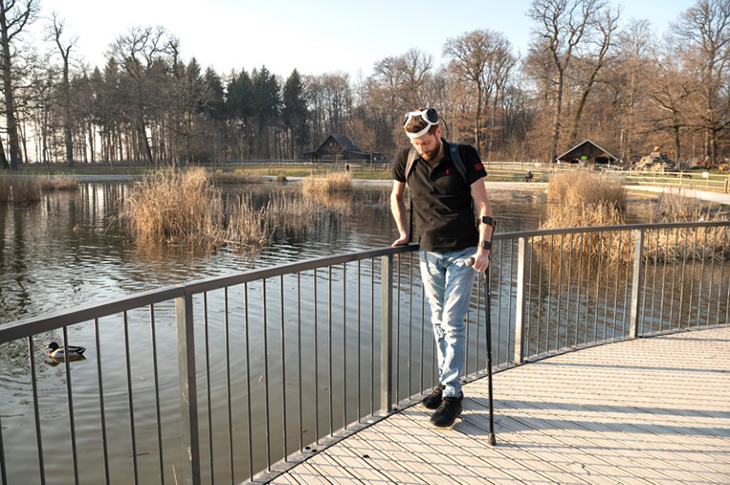
For quite some time, researchers have speculated about the potential of connecting brain implants with prosthetics to enable the transmission of nervous system commands through electrical signals. This idea, which seemed like science fiction in the past, has now come closer to becoming a reality, offering new hope for people with paralysis.
Gert-Jan Oskam, a man who was left paralyzed from the hips down following a devastating spinal cord injury in a motorbike accident, has experienced a groundbreaking transformation. Initially, he had regained a limited amount of mobility using a precursor technology. However, Oskam eagerly joined a proof of concept study, hoping to achieve even greater progress.
In the earlier stages of the study, Oskam would have to lift his heel, which triggered a series of electrical impulses from an implanted device in his spinal cord. These impulses, in turn, allowed his legs to move. Though the technology showed promise, it had limitations. The process was clunky and proved to be ineffective when navigating uneven surfaces.
But now, thanks to continuous advancements in medical research, Oskam has reached a remarkable milestone. Through cutting-edge electrical nerve stimulation, he can walk unsupported, a feat previously unimaginable for someone with his level of paralysis. He has even demonstrated the ability to climb stairs unassisted, showcasing the extraordinary potential of this groundbreaking technology.
“The stimulation before was controlling me, and now I’m controlling the stimulation,” Oskam said to NBC when he talked about his new equipment.
With a brain implant in place, Oskam can now control his leg movements by sending signals to a computer housed in a backpack. This computer calculates the appropriate current to be transmitted to a new pacemaker in his abdomen. Subsequently, the pacemaker sends a signal to an older implant in his spinal cord, enabling him to move his legs in a more controlled manner. To coordinate these signals, Oskam wears a helmet equipped with antennae.
According to the scientists who developed this groundbreaking technology and are working closely with Oskam, he can now walk approximately 200 meters per day and stand unassisted for around 2-3 minutes. Oskam recalls a time when he needed to do some painting, but nobody was available to assist him. Thanks to the new technology, he was able to take his crutch and accomplish the task independently.
In a remarkable turn of events, in less than a year, the scientists have observed an unexpected outcome: the technology seems to have bridged the gap in Oskam’s nervous system. Now, even when the device is turned off, he can lift himself out of a chair and walk with the aid of a crutch.
The potential of this “digital bridge” technology is vast, and the scientists are excited about its future applications. They plan to work with patients who have paralyzed arms and hands, as well as stroke victims, as it represents a significant advancement in nervous system stimulation technology.
This success story represents a significant step towards bridging the gap between brain implants and prosthetic limbs. It opens up new possibilities for individuals living with paralysis, providing them with renewed hope for regaining mobility and independence in their daily lives.
As researchers and medical professionals continue to refine this technology, there is a growing optimism that more individuals with spinal cord injuries or other neurological conditions could potentially benefit from similar treatments in the future. The potential to restore movement and function to those previously considered permanently paralyzed is becoming more tangible with each breakthrough in the field of electrical nerve stimulation and brain-machine interfaces.



